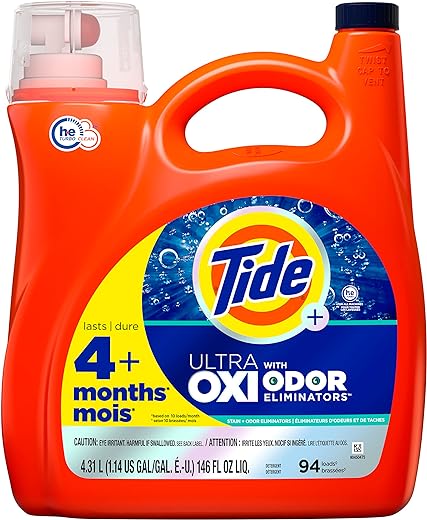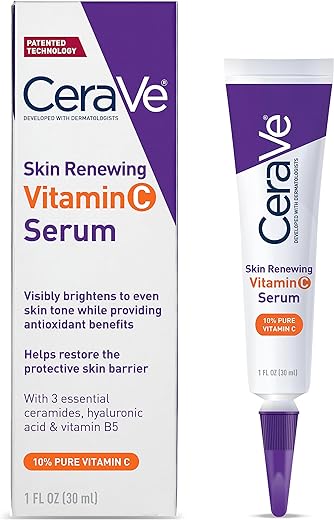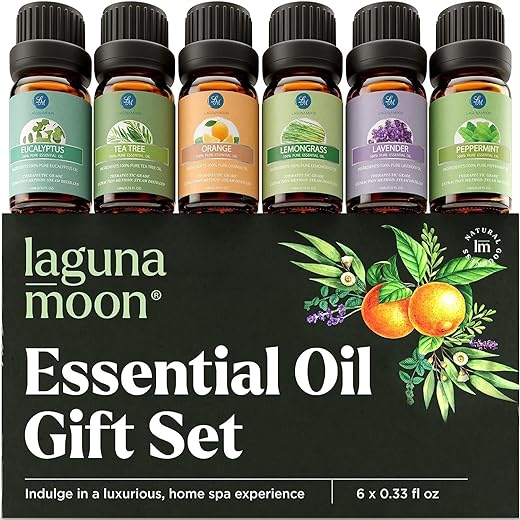Properly cleaning workout clothes is crucial to maintain hygiene and extend the lifespan of activewear. Regular cleaning removes sweat, bacteria, and odors, preventing them from building up and causing damage. Follow the step-by-step guide to keep your workout clothes fresh, clean, and in top condition after every session.
Top Picks for Maximum Performance
Sort Clothes by Fabric Type
Sort Workout Clothes by Fabric Type Guide
Separating workout clothes by fabric type ensures they receive the proper care to maintain their quality over time. Different materials require specific cleaning treatments to prevent damage and maintain their effectiveness in wicking away sweat or providing support.
- Step 1: Separate by Material
- Divide workout clothes into piles based on their fabric type, such as polyester, spandex, cotton, or blends.
- Step 2: Check Care Labels
- Look for care labels on the clothing to identify any specific cleaning instructions recommended by the manufacturer.
- Step 3: Select Washing Method
- Machine Washable: Wash polyester, spandex, and blends in a gentle cycle with cold water to maintain elasticity.
- Hand Wash Only: Treat delicate fabrics like silk or specialty blends with care using a gentle detergent and cold water.
- Step 4: Air Dry as Needed
- Consider air-drying workout clothes with moisture-wicking properties to preserve their technical features.
By sorting workout clothes based on fabric type and following suitable cleaning methods, you can prolong their lifespan and keep them looking and feeling their best for longer.
Check Care Labels
Look at the care labels of your workout clothes prior to getting started. By doing this, you can prevent any damage to the fabric through specific washing instructions. Verify the tags for indications such as ‘wash cold,’ ‘hand wash only,’ ‘line dry,’ ‘do not tumble dry,’ etc. This simple step will ensure your workout attire remains in top condition and lasts longer.
For example, suppose your favorite sports bra contains a care label stating ‘machine wash in cold water.’ By following this instruction, you can preserve the fabric’s color and elasticity. Alternatively, if your workout shorts specify ‘do not iron,’ take heed to avoid risking the material. Regularly reviewing care labels is essential for maintaining the quality and longevity of your gym wear.
Pre-Treat Stains
To treat any visible stains on clothing effectively, start by selecting a pre-treatment solution that suits the type of stain. For food stains, make a paste of baking soda and water, apply it to the stain, and let it soak in for 30 minutes before washing. Alternatively, use a laundry detergent specifically designed for pre-treating stains. For oil-based stains like grease, rub dish soap or a specialized stain remover onto the affected area before washing.
For tougher stains such as wine or coffee, mix equal parts vinegar and water, dab the solution onto the stain, and gently blot. Allow it to sit for a few minutes before washing as usual. Additionally, for protein-based stains like blood or sweat, soak the garment in cold water mixed with enzyme detergent for at least 30 minutes before laundering. Remember, always check the garment’s care label and test the pre-treatment solution on a hidden area to ensure it won’t damage the fabric.
Use Cold Water
- Wash your workout clothes in cold water: Washing your workout clothes in cold water is crucial to maintaining their quality. Cold water helps prevent shrinkage and preserves the elasticity of the fabric.
- Action Steps: Separate your workout clothes into piles based on color and fabric type. This will avoid any potential color bleeding or damage that could occur during the wash. Load your washing machine with the first pile of clothes. Set the machine to a cold water cycle. Add a mild detergent suitable for cold water washes. Run the cycle as you normally would.
- Outcome: By washing your workout clothes in cold water, you are extending their longevity and keeping them in prime condition for future workouts.
Remember, a simple adjustment to using cold water can make a big difference in keeping your favorite workout clothes looking and feeling their best.
Choose a Gentle Detergent
“`markdownChoose a gentle detergent specially formulated for activewear to avoid harsh chemicals that can deteriorate the fabric. This helps prolong the life of your athletic wear while also being gentle on your skin. Look for detergents labeled as ‘sport,’ ‘activewear,’ or ‘gentle’ to make sure your garments are getting the proper care they need for longevity.
When doing your laundry, separate your activewear pieces from your regular laundry. Sort them according to color, but also be mindful to follow fabric care symbols located on the tags to maintain performance quality. By choosing a gentle detergent and following proper care instructions, your activewear will look good, feel fresh, and provide the support you need for longer.“`
Avoid Fabric Softeners
- Avoid using fabric softeners as they tend to leave a residue on your clothes. This residue can reduce the moisture-wicking capabilities of your garments, impacting their ability to absorb sweat and moisture effectively.
- Opt for detergent specifically designed for sportswear or activewear, as these products help maintain the fabric’s wicking properties. Air dry your activewear instead of using a dryer to preserve the moisture-wicking capabilities for longer.
Air Dry or Low Heat
Air Dry or Low Heat
- Hang your workout clothes: After washing the clothes, hang them on a drying rack or clothesline for air drying.
- Avoid direct sunlight: Place the clothes in a shaded area to prevent color fading and wear from UV exposure.
- Pat dry with a towel: If tumble drying on low heat, pat the clothes with a towel to remove excess moisture first.
- Select low heat setting: Set your dryer to a low heat mode to minimize any damage to the fabrics and stitching.
Remember to always follow garment care instructions and label recommendations when choosing between air drying or low heat tumble drying for your workout clothes.
Freshen Up Your Gear!
By diligently following these suggested washing tips, anyone can ensure their workout clothes remain in pristine condition, allowing for comfortable and efficient gym sessions or runs without worrying about lingering odors or wear and tear. Remember, maintaining the cleanliness of your exercise gear directly correlates to your overall workout experience.
Essential Supplies
Proper Care Advice
Optimize Your Performance with Proper Workout Attire
- Ensure Proper Fit: Make sure your workout clothes are comfortable and not too tight or too loose. Your workout shoes should also fit properly to provide support and stability
- Dress for the Activity: Choose attire suitable for the type of workout you’ll be doing, such as moisture-wicking fabric for cardio or supportive shoes for weightlifting
- Layer Up: Depending on the climate, layer your workout clothes to stay comfortable during your exercise routine
- Don’t Forget Accessories: Sport-specific accessories like headbands, sweatbands, or compression sleeves can enhance your workout experience and provide extra support where needed
- Wash and Replace: Regularly wash your workout clothes to maintain their freshness and durability, and retire shoes that show signs of wear and tear to prevent injury
Essential Gear FAQ
Do different activities like yoga, cycling, or weightlifting require specific types of clothing and shoes?
Yes, different activities like yoga, cycling, and weightlifting do require specific types of clothing and shoes for optimal performance, comfort, and safety. For example, yoga involves a lot of stretching and bending, so flexible and breathable clothing is recommended, along with grip socks or bare feet.
Cycling requires form-fitting attire that reduces wind drag and padded shorts for long rides. Specific cycling shoes can also enhance efficiency and power transfer to the pedals. Weightlifting needs clothing that allows for free range of motion, like workout leggings and breathable tops, along with flat-soled shoes for stability and proper weight distribution.
Using the appropriate clothing and footwear for each activity can help individuals perform better, prevent injuries, and enhance their overall experience.
What factors should be considered when choosing workout clothes for different body types?
When choosing workout clothes for different body types, several factors should be considered.
– Firstly, one should consider the type of exercise for which the clothing is being chosen. Different activities require different levels of support, breathability, and flexibility.
– Secondly, the body shape and size of the individual play a significant role. Loose-fitting clothes may be preferred by some, while others may opt for more form-fitting options.
– Fabric choice is crucial as well. Moisture-wicking fabrics are ideal for keeping the body cool and dry during workouts.
– Additionally, consider the appropriate length and fit for comfort and unrestricted movement.
By taking these factors into account, one can choose workout clothes that not only suit their body type but also enhance their exercise experience.
Should workout clothes be chosen based on the type of workout being done, and if so, what are some guidelines to follow?
Yes, workout clothes should absolutely be chosen based on the type of workout being done. Here are some guidelines to consider when selecting workout attire:
- **Consider the intensity**: Choose breathable and moisture-wicking fabrics like polyester blends for high-intensity workouts to keep you cool and dry.
- **Choose supportive garments**: Opt for sports bras with good support for activities like high-impact running, and compression clothing for activities like weightlifting.
- **Tailor style to activity**: Choose form-fitting clothing for activities like yoga, and looser-fitting clothes for activities like dance or aerobics to allow for maximum movement.
- **Protect against the elements**: Wear long sleeves or layers for outdoor workouts in cooler weather, and opt for lighter, sun-protective clothing for outdoor activities in the heat.
What materials are best for moisture-wicking and breathability in workout clothes?
When it comes to selecting workout clothes with excellent moisture-wicking and breathability properties, fabrics such as polyester, nylon, and spandex are your best choices. These materials have synthetic fibers that draw moisture away from the body, allowing sweat to evaporate quickly and keeping you dry and comfortable during your workout. Additionally, these fabrics offer good breathability, ensuring proper airflow to help regulate your body temperature while exercising. So, if you’re looking for workout clothes that keep you feeling fresh and dry, opt for garments made from polyester, nylon, or spandex.

















I usually air dry my workout clothes to prevent shrinking and preserve the elasticity of the fabrics. However, sometimes I’m in a hurry. Is it safe to use a dryer on the lowest heat setting for activewear?
Author’s Response: Using a dryer on the lowest heat setting should be safe for most workout clothes, but be cautious with delicate fabrics. If you’re concerned, it’s best to air dry them to be on the safe side.
Has anyone tried using a mesh laundry bag for washing workout clothes? I’ve heard it can help protect delicate fabrics and prevent them from getting damaged in the wash. Any thoughts?
Author’s Response: Using a mesh laundry bag is a smart idea to protect your workout clothes, especially if they have delicate fabrics. It’s worth giving it a try to see if it makes a difference in the longevity of your activewear.
Is there a specific way to handle clothes made of a blend of different fabrics? I have some workout clothes that are a mix of polyester and spandex, and I’m not sure if I should treat them differently during washing.
Author’s Response: When dealing with blended fabrics like polyester and spandex, it’s best to follow the care instructions for the most delicate fabric in the blend. In this case, you can treat them as you would treat the spandex since it is usually more sensitive than polyester. Always wash in cold water and avoid high heat to maintain the integrity of the fabrics. Hope this helps!
I’ve found that using a pre-treating spray on tough stains before washing really helps to get rid of them completely. It’s a game-changer for me, especially with sweat stains on my workout clothes.
I find that turning my workout clothes inside out before washing them helps to maintain the colors and prevent pilling on the fabric. It’s a small change but has made a noticeable difference in the longevity of my activewear.
Author’s Response: Turning your workout clothes inside out is a fantastic way to preserve the colors and keep the outer surface in better condition. Thank you for sharing this helpful tip!
I’ve started adding a cup of white vinegar to the rinse cycle when washing my workout clothes. It helps eliminate any lingering odors and keeps the fabrics fresh. Anyone else tried this trick?
Author’s Response: Adding white vinegar is a great natural way to freshen up workout clothes and remove odors. It’s a good tip to keep in mind for those looking for a simple and effective solution to eliminate smells.
I have sensitive skin and struggle with finding the right detergent. Does anyone have recommendations for gentle detergents that are suitable for sensitive skin but still effective in removing sweat odors?
Author’s Response: For sensitive skin, you might want to consider detergents labeled as ‘free and clear’ or ‘hypoallergenic’. They are usually milder and less likely to cause irritation. Some popular brands include Seventh Generation Free & Clear and All Free Clear.
Author’s Response: That’s a great tip! Pre-treating stains can definitely make a big difference in the cleanliness of your workout clothes. Thanks for sharing your experience.